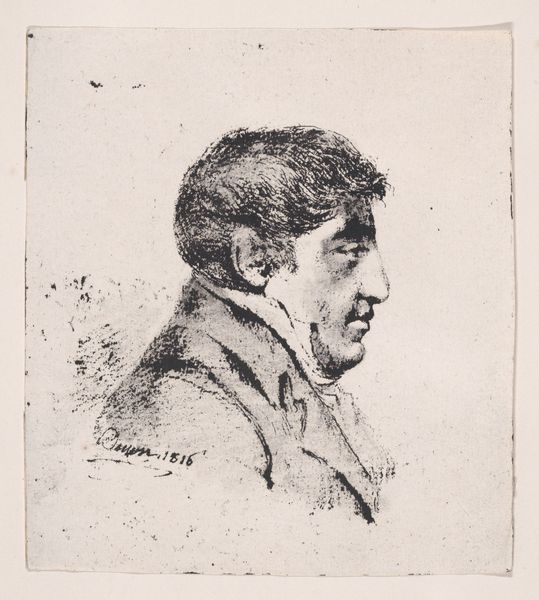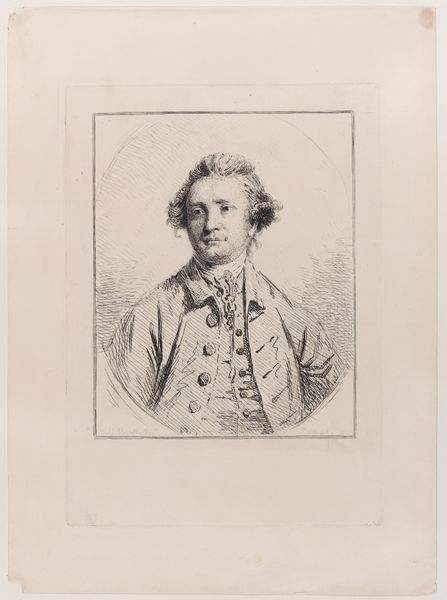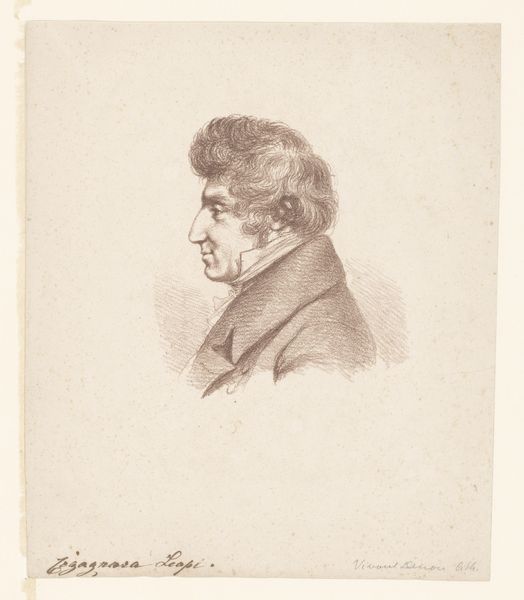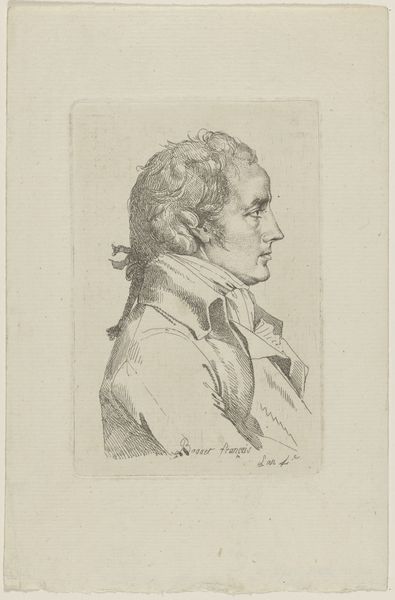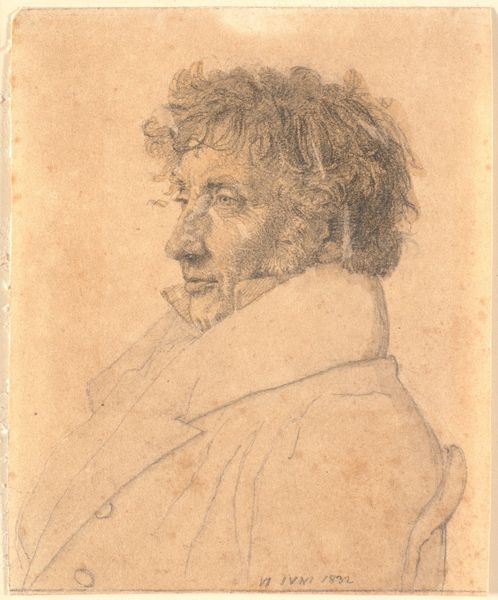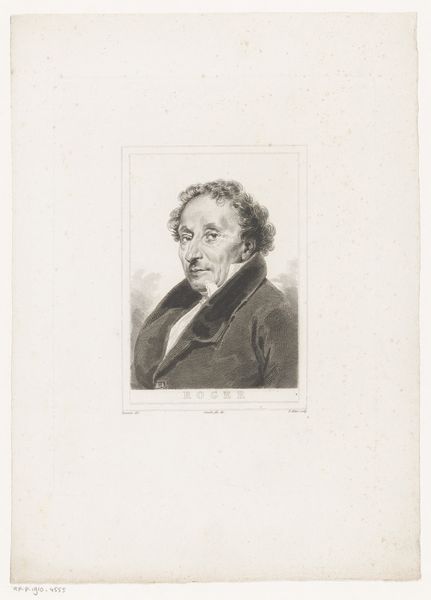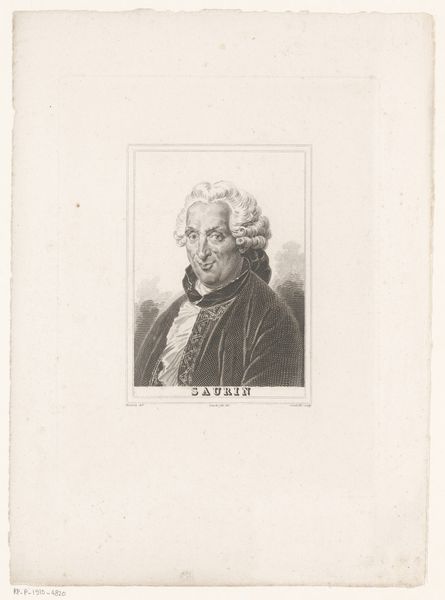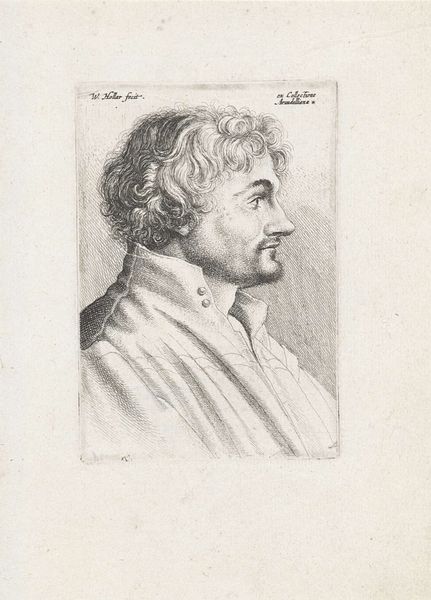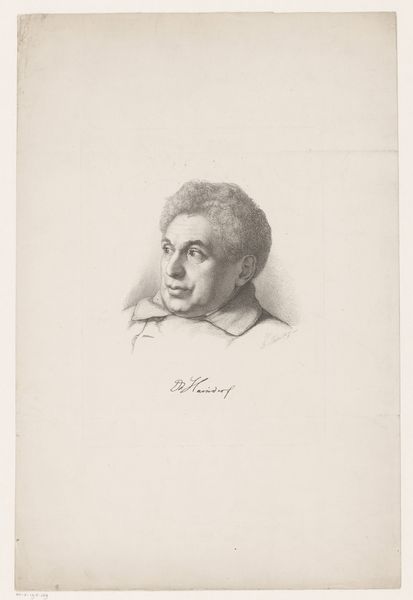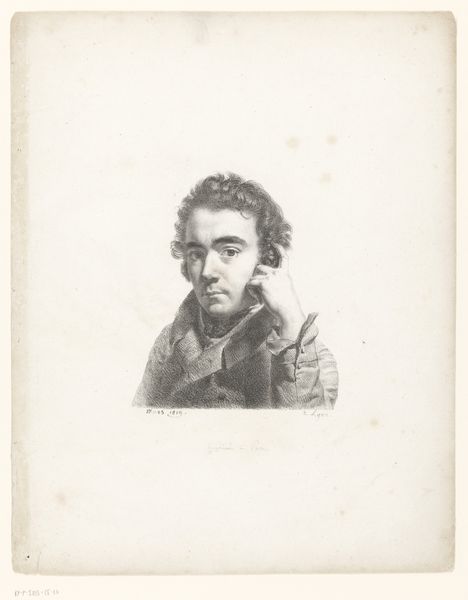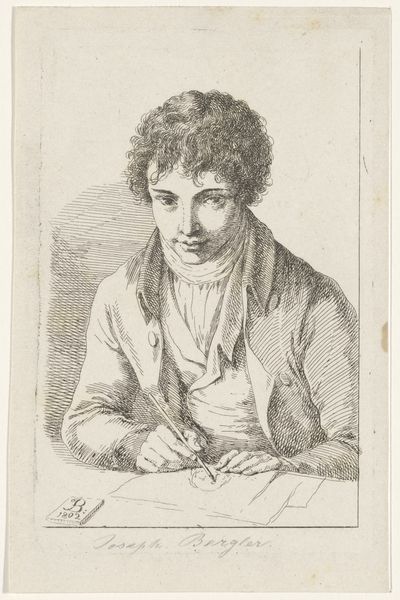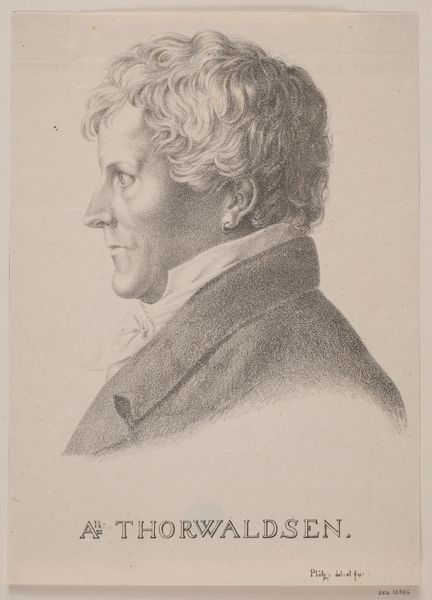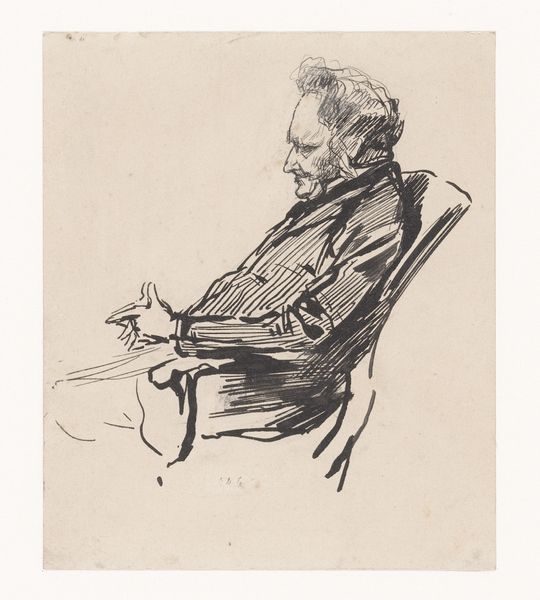
Bagermester Købkes portræt; brudstykke af: Blad med tre portrætter: Bagermester Købke, Sophie Krohn og N. Feilberg 1832 - 1835
0:00
0:00
drawing, lithograph, print, graphite, charcoal
#
portrait
#
drawing
#
lithograph
# print
#
charcoal drawing
#
pencil drawing
#
romanticism
#
graphite
#
portrait drawing
#
charcoal
Dimensions: 90 mm (height) x 77 mm (width) (bladmaal)
Curator: Oh, this portrait of Bagermester Købke. Look at the determined set of his jaw. His gaze, even in profile, feels remarkably direct. Editor: It feels austere. Striking, of course, with the dramatic contrasts of light and shadow created by the graphite and charcoal, but also... quite working class. You can feel the material pressure behind it. Curator: Working class? It's a fragment, mind you, a section of a sheet containing three portraits, all rendered between 1832 and 1835. Købke did this of his father; it humanizes him and suggests so much beyond what's depicted. It invites you to ponder the full man behind the face, perhaps the struggles of his bakery. Editor: Exactly! That’s what I’m saying, that’s the feeling it conveys to me – hard labor. And done with graphite, charcoal – materials of industry! This isn’t some grand oil painting commissioned by royalty. Look closely: every stroke signifies a kind of... well, it feels honest, doesn't it? No pretense here, just pure utility of media meeting subject. A bakery owner rendered with the tools of, metaphorically, soot and labor! Curator: There's also a certain vulnerability. It’s a tender gaze from son to father, rendered in a softer manner, despite its realism. Do you notice the light catching the furrow in his brow? It gives me this palpable sense of fleeting moments, an embrace. The details in the wisps of his unruly hair—romantic, even. Editor: But the lithographic print! It inherently makes it more accessible, ready to be disseminated... a democratic multiple! Think about that reach! That choice of medium is a deliberate, quietly subversive act in itself. High art applied to, and accessible to, a much broader public, beyond those velvet-rope boundaries. Curator: I see that. I do think we come back to KØbke's intimate and personal artistic vision though, capturing something fundamentally human in his father. Something timeless. Editor: True. Though even intimacy is made available and ready for dissemination through the materiality of it. It really makes me think of all the bakers of the world now, all of their products moving within the currents of capitalism and consumption. That starts here, within the artwork itself, its choices, material presence, even its social implications.
Comments
No comments
Be the first to comment and join the conversation on the ultimate creative platform.

